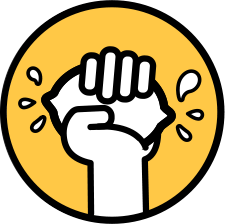Is it only a service design project? Our experience, our tips
As a Service Designer and former UX researcher, I've realized that defining a Service Design project and how to sell it to a client takes work.
First, it's not easy to find a client willing to go on a long journey to create or improve a service. Second of all, our clients may need help understanding the scope of this methodology.
So, I'm wondering. How can we know if clients need service design for their projects and objectives? Is there such a thing as a pure service design project?
Here is my experience, hope it helps.
How important is Business and Strategy in Service Design?
As businesses diversify in governance, innovation, and strategy, always adapting to changing market trends, their needs become increasingly complex. Clients often need to learn what they ought to do to reach their business goals, so they ask external companies like us to help them.
However, in my short career as a Service Designer, I could not imagine how many parameters had to be considered to carry out a project sold as "Service Design successfully." In other terms, if you want to execute a project where the clients want to improve their service or product, you better know about Business and Strategy Design.
The good news is that these practices follow the same methodology, i.e., Design Thinking or the Lean Startup methodology.
Lean Startup Methodology Patterns
As we already said, these practices - and so service design - always follow the same pattern; only activities may vary depending on the need.
- First Step: explore the actual context of how the product or service works, who is their competition, who are the target customers, what are their frustrations and expectations, and what are the goals that the client wants to achieve.
- Second Step: first of all, define the real problem, explore possibilities, and define the thresholds. Finally, select the few ideas to be tested.
- Step three: define how you want to test the concept or product/service ideas and create the right prototype to test it out. Test, gather insights, and draw conclusions that will make you adjust and iterate the concept, design, model or strategy. Eventually, validate all your assumptions.
That's it!
How to assign clients’ objectives in Service Design?
If you identify as a UX researcher, Service Designer, Business Designer, Strategic Designer, or Product Designer, be aware that to tackle today-complex projects, you better know what encompasses the other practices.
The key is to uncover where the client's initial objectives and assumptions come from. For example, if the client's objective is to add a new feature, revamp their product, or improve their service, the project starts incorrectly. Their objective should focus on the outcome rather than the way to achieve it. You may stumble upon a few scenarios when researching or conceptualizing the solution.
Do you need some examples? Here they are:
Scenario 1: Upon conducting the interviews, you discover that customers have more pressing expectations and frustrations.
Scenario 2: You discover that a part of the solution cannot be implemented due to the ownership of another department within the company, highlighting the issue of working in isolated groups. (i.e., silos).
Scenario 3: After conducting the research, you come to realize that the proposed solution could have an impact not only on how people work within their organization but also on their entire business model.
Research, Testing, and functional organization are the key in Service Design
Many of our clients are startups in the pre-seed phase - i.e., when the idea has not yet become a minimum viable product (MVP), and they already want to develop their idea (or sometimes hunch) into the design to create an MVP as quickly as possible. However, this idea must initially be presented to the target audience.
Thus, there are three key activities to undertake, regardless of the client's goals.
- Bring to light if the client's idea is based on an assumption or previous research.
- Understand how their functional organization is structured, as the new proposed service may impact it.
- Test the idea with customers early in the project. Otherwise, you might waste resources on something that needs to be tested or fully developed.
The most difficult part lies ahead; persuading the client of the importance of undertaking the Research and Testing phase.
In future articles, I will explore various methods of validating assumptions, different types of prototyping and testing, and ways to persuade clients about the importance of research and testing.
